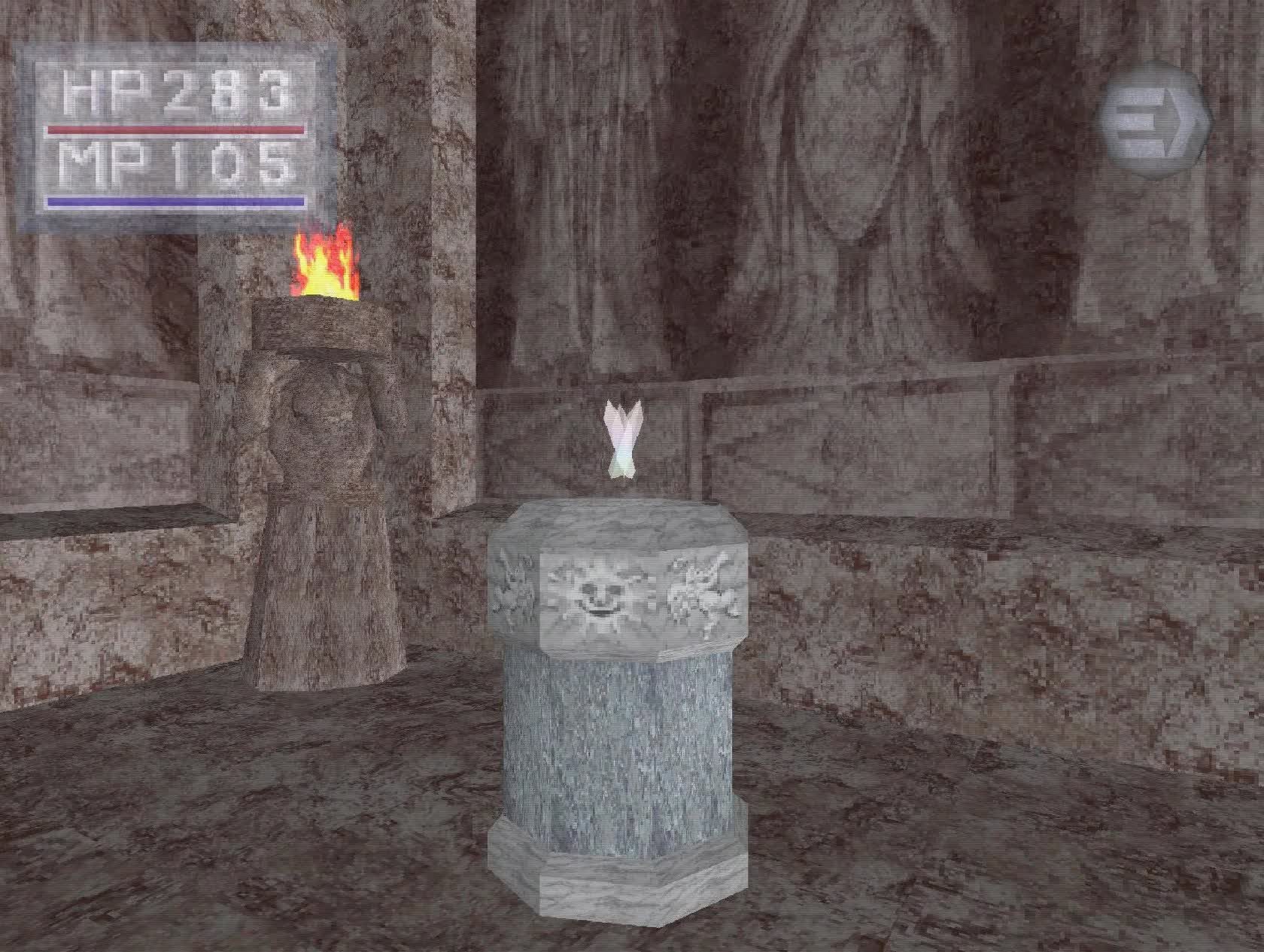King's Field Retrospective: Exploring the Roots of Elden Ring and Dark Souls
A little over 10 years ago, Demon's Souls launched on the PS3, an action RPG import from a little-known Japanese developer named FromSoftware. It would only be accurate to say that game and its successors and spin-offs in the Souls series seriously transformed the action-RPG genre.
The past three Assassin's Creed games have mimicked FromSoftware's shoulder-buttons-and-triggers control configuration. And when Ubisoft "borrows" your combat system wholesale, you're definitely onto something.
FromSoftware are now something of a household name. Elden Ring, their upcoming title is being created in collaboration with George RR Martin of Game of Thrones fame. And while Bluepoint created it, the Demon's Souls remake remains one of a handful of PlayStation 5-exclusive titles out right now. From being known for the quirky Armored Core mech shooter series to a Sony launch-day system seller, From has gone a long way.

Elden Ring is set to bring the From Software formula to an open world environment
The Souls series didn't originate in a vacuum, though. Miyazaki & Co. didn't just decide one day to segue from sci-fi mech battles to gothic melee combat. No, FromSoftware's RPG history doesn't begin with Demon's Souls.
Where did that atmosphere, that epic sense of hopelessness come from, though?
We have to go back 15 years before Demon's Souls to the King's Field series. This pioneering, but thoroughly obscure line of first-person RPGs marked FromSoftware's first efforts at video game development and at the kind of oppressive atmosphere Souls games are known for. With Elden Ring set to release soon, now's a good time to rewind and discover 10 years of King's Field.
King's Field 1: A Forgotten Revolution
id Software and Quake are widely remembered as the first "true 3D" games on the market, with fully polygonal characters and environments. Yes, in 1996, Quake was a sight to behold on PC. But it wasn't actually the first full 3D title out there.
While a number of faux-3D titles like Ultima Underworld and id's own Doom launched in the early to mid-90s, these all came with substantial drawbacks: these games weren't actually built on 3D game engines. Instead, they used sprite scaling tricks to provide a more or less convincing illusion.

Ultimate Underworld: an early faux-3D roleplaying game - Image: DSOGaming
King's Field, on the other hand, was the real deal: full-3D environments, texturing, lighting, and polygonal characters. It launched nearly two years before Quake. And it was a PlayStation exclusive. Yes, Sony's PS1 delivered a full 3D RPG spectacle years before the PC.
King's Field was a technology marvel for the time. But just as interesting is the approach that FromSoftware took to narrative and gameplay. Spend 10 minutes with the original King's Field and it becomes evident where Dark Soul's brand of sparse, hinted-at doom comes from.
The first King's Field never launched outside Japan. However a fan translation and a PlayStation 1 emulator can help uncover this game's secrets. "Only the forest's drifting fog knew who this person was. The citizens called their saviour the Dragon of The Forest," goes the scrolling intro text that passes for King's Field's story. This deliberate vagueness is something we see in the narrative of Dark Souls titles, with reams of fan theory and speculation about just exactly what a particular plot point means.

King's Field's atmosphere and environment also bring to mind later Souls titles. One key difference? The game plays out in first person. This was likely a technical compromise, limiting the field of view enough to give the PlayStation 1 a chance at actually running the code.
The game ran at 20 FPS throughout, with intermittent dips – FromSoftware wasn't able to wring more out of the console's 34 MHz processor. But rather than hampering the experience, the developer actually built King's Field's gameplay around the slower framerate. Every movement in the game, from walking to swinging your sword is almost comically careful and deliberate. It takes a lot of time to swing at a skeleton.

King's Field featured fully-textured polygon graphics on the PlayStation in 1994 - Image: Vistapointe
FromSoftware built an entire risk-reward meta around the ponderous combat. Just like in Dark Souls, enemies hit hard. The Venus flytrap horror at the beginning of the game can take you out in a few hits. With no Estus flask, healing is even more difficult, and the power/stamina bar depletes after you launch a single attack. All of this makes timing just as important as in a contemporary Souls game: move out of the way during an enemy's attack frames, then time your ponderous sword swing just right to make contact before the next enemy attack animation. Yes, it's in first person, but the Souls DNA is all there to see.
King's Field was almost a PlayStation launch title, arriving just weeks after the console started shipping in Japan. It was From's first stab at video game development and it proved a commercial success in the Japanese market, enough so to spawn a sequel that eventually made it outside the country.
King's Field 2 and 3: The International Breakout
Between Nioh on PC, the Final Fantasy releases on mobile and even Atlas' Persona franchise, there's no dearth of Japanese titles launching for English-speaking audiences these days. The mid-90s were a very different time, though. The original PlayStation itself was Sony's first console and the company was known more for Walkmans than gaming.
The PlayStation launched in the US in September 1995, nearly a full year after its Japanese release. Because of this significant gap, a number of early launch-era PlayStation titles, including the first King's Field, never made it to American shores. The next two King's Field games, however, did have an international launch. Confusingly, since King's Field 1 never arrived in the US, King's Field 2 was titled "King's Field" in the US market and King's Field 3 went on to be known as King's Field 2.
King's Field 2 was largely an iterative update to the original game, though it featured slightly improved textures and a wider enemy variety. King's Field 3, however, the last title to launch on the PS1, was a magnum opus. The game took many of King's Field's innovation – including the lack of loading screens – and dialed things up to 11. King's Field 3 featured significant stretches of outdoor environments, connected seamlessly with dungeons.

This King's Field III object calls to mind the Sunlight Covenant from Dark Souls - Image: u/CeliceTheGreat
Just like Dark Souls would do decades later, the game offered players a sense of awe and scale as the starting village segued into new environments with not a loading screen between them.
At a technical level, King's Field 3 pushed the PS1 to its absolute limits. The seamless, full-3D environment and detailed (for the time) characters came at the cost of terrible performance. This was a game that peaked in the 20 FPS range, with things only going downhill from there, especially in exteriors. The slow pace of combat helped, but at times, the game would make you feel like you were walking and fighting through jelly.
A GamePro review from 1996 describes combat encounters that took up to five minutes, just because the character and enemies moved so slowly. With its unusual combat and dark, sparse story, King's Field 3 and the franchise on the whole remained niche. However, commercial performance was just good enough to merit one more ride, this time on the PlayStation 2.
King's Field IV: The PS2's Unsung RPG
The PlayStation 2 has something of a reputation for hosting phenomenal Japanese RPGs. From Yakuza to Persona, to Kingdom Hearts and Final Fantasy, the console has more than its fair share of classic JRPGs.
But there's one FromSoftware title on PS2, one of the most technically ambitious games on the console, that remains unappreciated to this day: King's Field IV: The Ancient City. The last game in the franchise – barring two poorly-received PSP spin-offs – in many ways, the game's visuals hold up even today. The technical leap to the PS2 makes it easier to see the clear thread in art direction and atmosphere between these games and their Souls successors. Even small details, like the hunched-over deserter at the start of the game recall characters like Dark Souls 3's Hawkwood.
King's Field IV retains the slow pace and low framerate of previous games. The 20 FPS target allowed FromSoftware to bring out technical effects that were, perhaps, ahead of their time. We see dynamic lights, volumetric fog, and high polygon enemy models. Compared to King's Field IV, The Elder Scrolls III: Morrowind, an Xbox RPG that arrived a year later, looks positively primitive in places.

King's Field IV brought the series to sixth-gen hardware - Image: AdammusPrime
A generation beyond its PS1 origins, King's Field IV delivers an impressive sense of place and oppression, with gritty wall textures, dark skies, and environs that wouldn't look out of place in a modern Souls game with a bit of spit and polish.
King's Field IV came out in 2001, an unfortunate release window. Between AAA giants like Grand Theft Auto III and Final Fantasy X, King's Field IV never stood a chance to capture an audience like the Souls games ultimately did.
FromSoftware pitched Demon's Souls to Sony, who were half-hearted enough about it that they almost made it a Japan-only release. If not for that last move, From's unique brand of environmental storytelling would have remained mostly forgotten.
The Beginning, Not the End of an Era
King's Field is dead. But its spiritual successors, the Souls series, have gone to become one of the most recognizable names in gaming. While not everything carried over, the essence of King's Field: mysterious, foreboding plotlines, interconnected environments, and a simple but brutal stamina and timing-based combat system are very much alive in today's gaming milieu.

Hollow Knight leverages "Soulslike" mechanics in the context of a sidescroller
"Soulslikes" are an entire genre, ranging from sidescrollers like Hollow Knight to Dark Souls clones like Lords of the Fallen. Not many hold a candle to the mainline Souls games. But the best come close to that enticing mix of combat, mystery and foreboding that King's Field pioneered 25 years ago.
FromSoftware's Elden Ring arrives January 21, 2022

